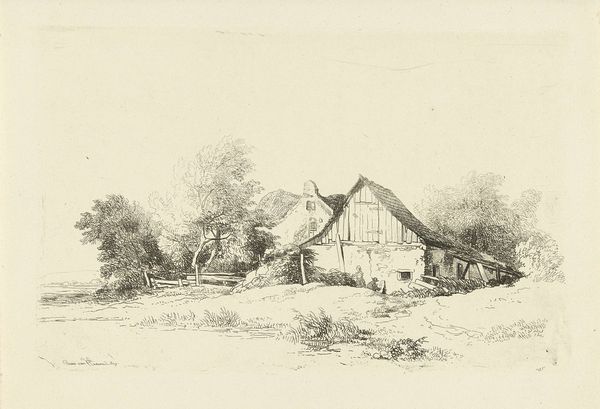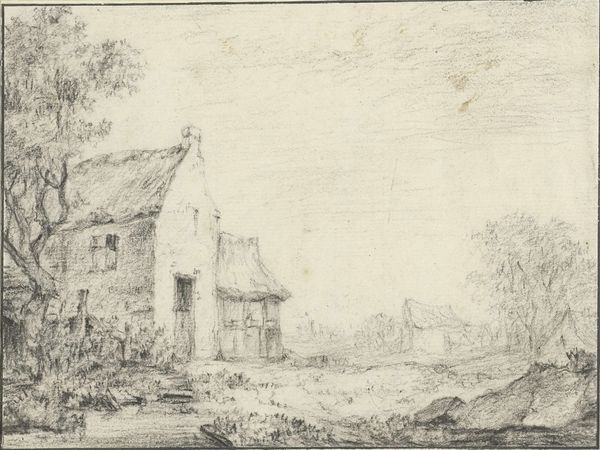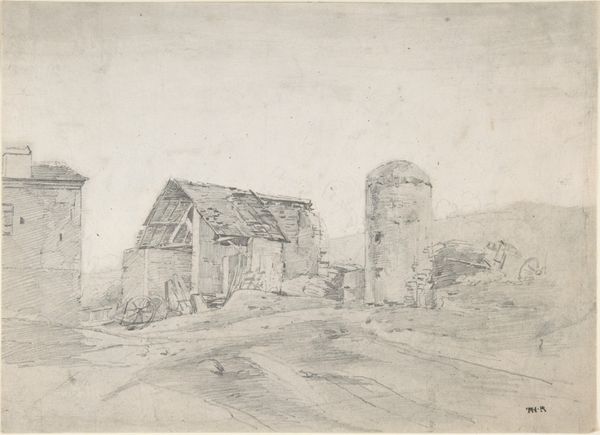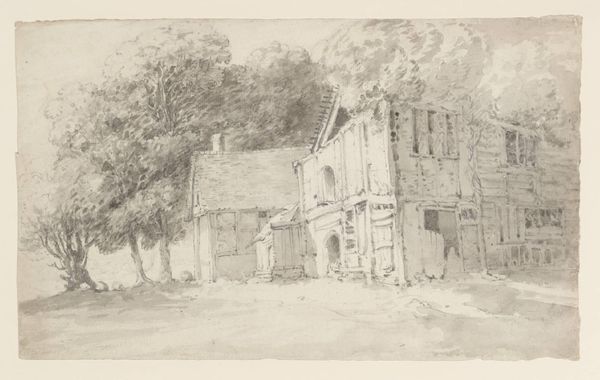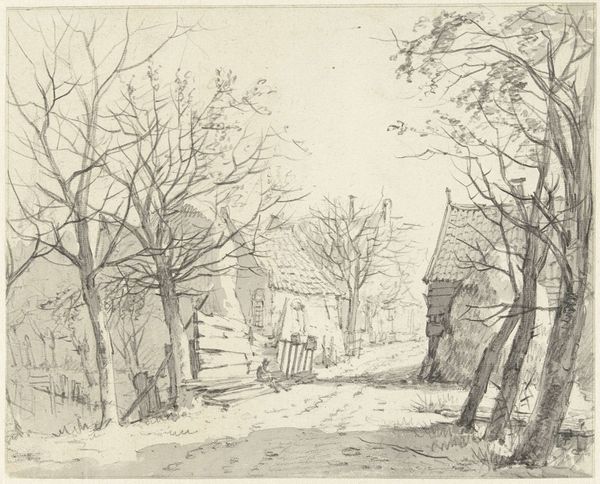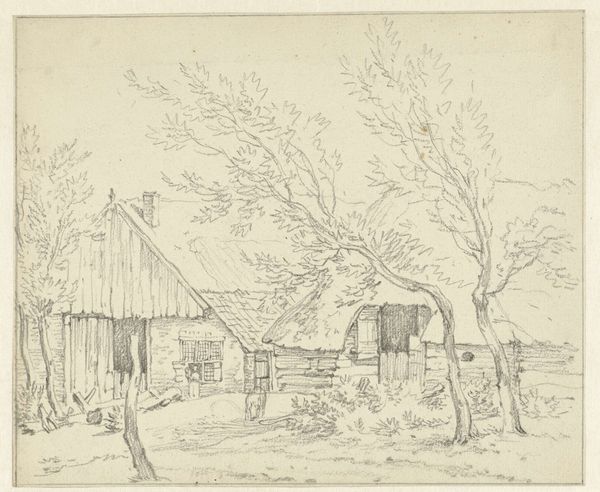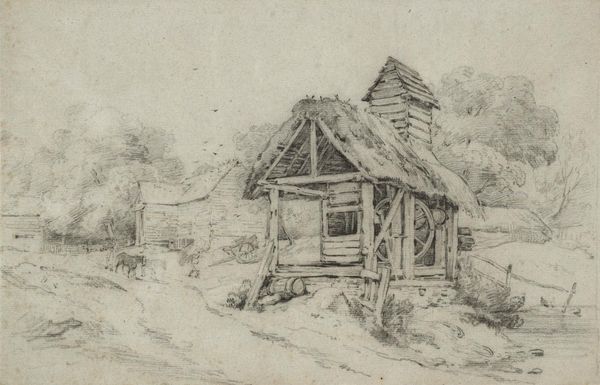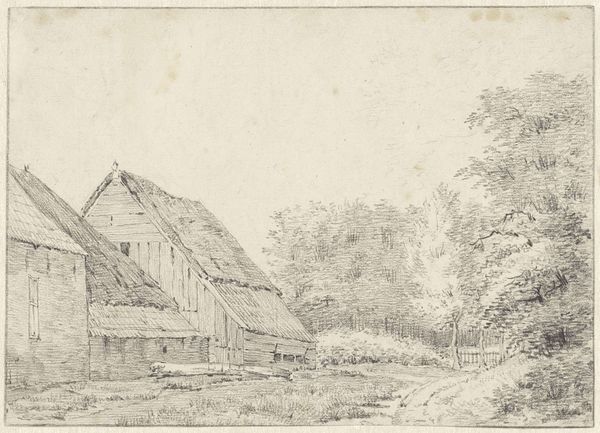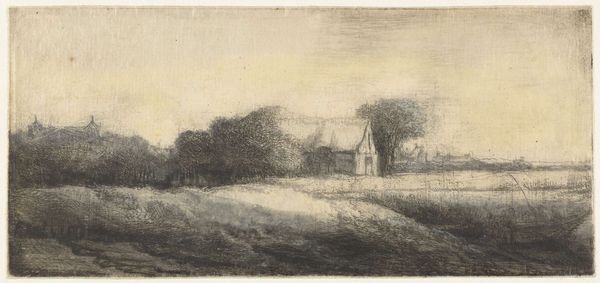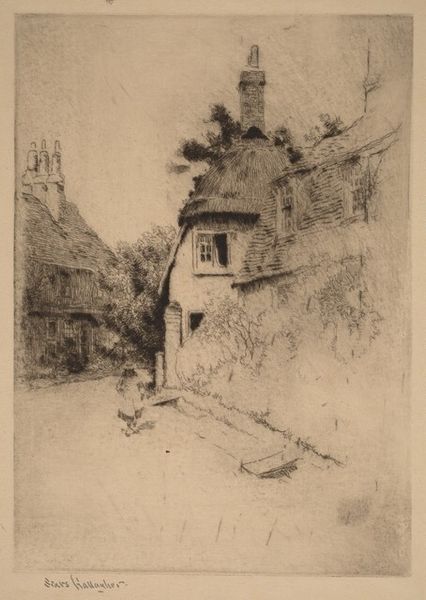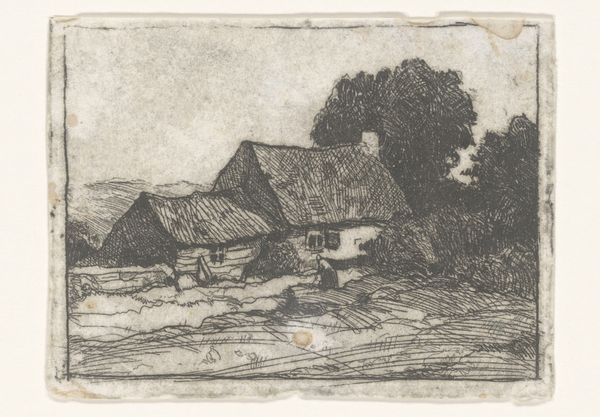
drawing, pencil
#
drawing
#
landscape
#
road
#
pencil
#
realism
Dimensions: height 314 mm, width 403 mm
Copyright: Rijks Museum: Open Domain
Curator: This is Abraham Johannes Ruytenschildt's "Huis aan een weg in een heuvellandschap," dating from around 1788 to 1841. The medium is pencil on paper, reflecting the artistic style of landscape realism. Editor: There's a stark simplicity here. The solitary house seems to almost exhale melancholy onto the empty road. It projects the quiet resilience of rural life. Curator: Rural life, certainly, but I think that during Ruytenschildt's time, representations of such landscapes became politicized, aligned with developing ideas of nationhood and cultural identity. Think of the way in which these humble homes visually become associated with the virtue of the common citizen. Editor: True, but consider, too, that the drawing’s muted tones might suggest something else—a commentary on the precariousness of their existence. It prompts a contemplation of who has access to such landscapes and who is excluded from it. Are these dwellers experiencing simple pleasures or quiet desperation? Curator: That's insightful. And we can understand the choice of landscape as a challenge to the dominance of courtly and aristocratic subject matter prevalent in the academies of the day. By focusing on the everyday, Ruytenschildt elevates the ordinary. The simplicity is precisely the point. Editor: Yet, what story is this landscape serving? We should consider the socio-political dimensions of pastoral imagery at this time. Are they propaganda about rural innocence? Or a reflection on the actual difficulties of country life? Curator: His delicate pencil strokes show the effects of natural light on simple structures, yes. But art and history intersect in that act. How is the artist helping us rethink social hierarchies? By positioning the rural house as worthy of attention? That gives it agency beyond its size or state of disrepair. Editor: I still feel the artist may be subtly pointing to a societal burden on these communities and not a celebration. Curator: Perhaps the beauty lies in that irresolution, in the artist asking us to sit with that uncertainty, refusing to reduce people's lives to a single perspective. Editor: Yes, Ruytenschildt gives us room to engage and explore both its context and emotional textures. Curator: Agreed.
Comments
No comments
Be the first to comment and join the conversation on the ultimate creative platform.
